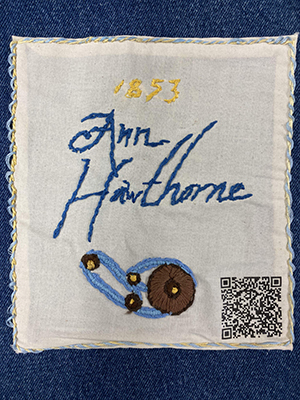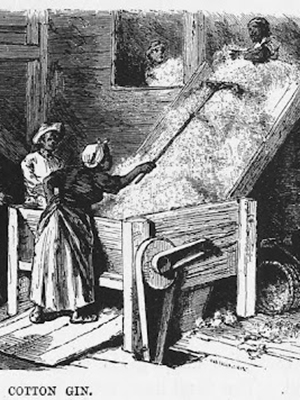Ann Harthorne
“I was born in slavery, and I was a right sizeable gal when freedom come. I was 'about 10 or 12 year old when freedom rise up. I was born up here in Jasper. Old master Woodruff Norsworthy and Miss Carolina, they was my old master and mistress. Miss Carolina she named me. My pa was Len Norsworthy. My ma was named Carolina after old mistress. Yes, I remember the house I was raised in. It was just a one-room log house. The mattress was made out of straw. Sometime they make them in corn sacks and sometime they put 'em in a tick what they weave on the loom. I had an aunt what was the weaver. She weave all the time for old master. She used to weave all of us clothes. That was a big plantation. There was a gin and cotton press on the place. Old master gin and bale his own cotton. That old press had them long arms a-sticking down what they hitch horses to and make them go ‘round and ‘round and press the bale.” – Ann Hawthorne
 Anthony Andrade ’26
Anthony Andrade ’26
Eli Whitney left Massachusetts for the same reason many recent college graduates do. He desperately needed a job to repay his debts. He became a private tutor on a Georgia cotton plantation, where his boss challenged him to solve their biggest problem: the time-intensive process of hand picking sticky green seeds out of the fluffy bolls. Based on earlier designs and ideas he stole from enslaved workers, Whitney filed his patent for the cotton gin in 1794. As a result, the Southern production of cotton skyrocketed and the U.S. became the leading supplier to the world. While the mass production of the gin eliminated the laborious task of hand-picking the seeds out, it actually increased the plantation owners' use of slavery. The result was that cotton growing became so profitable that more enslaved people worked on even larger plantations. Before the gin was patented, there were only six states where slavery was legal. By 1860 there were fifteen.
Sources
- Federal Writers' Project: Slave Narrative Project, Vol. 16, Texas, Part 2, Easter-King 1936.
